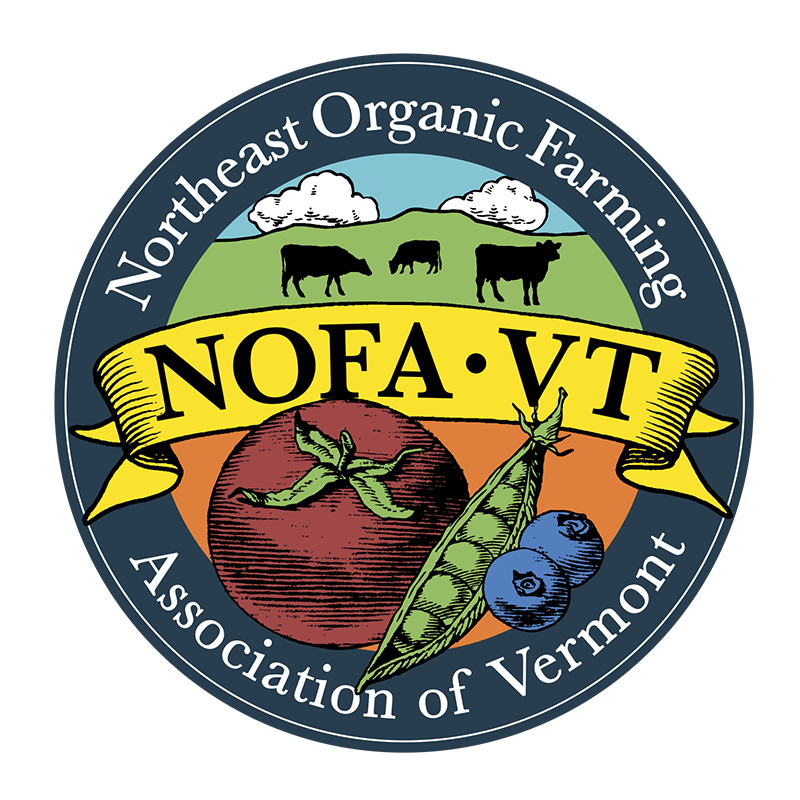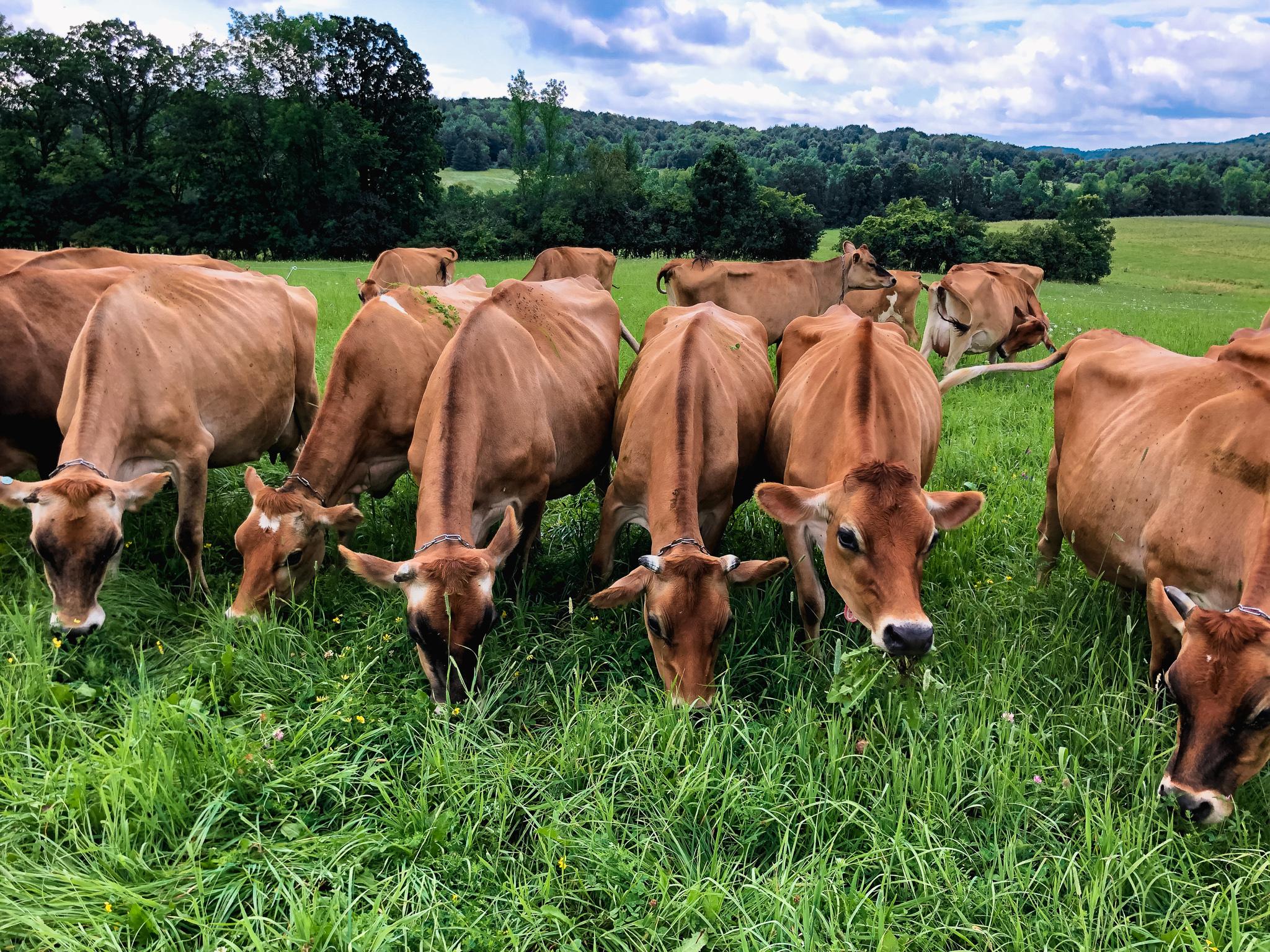Get these bi-weekly dispatches from farmers right in your inbox by subscribing to News From the Farm! This newsletter is written for kids and those who care for them.
October 10th, 2022
Dear Friend of NOFA-VT,
What do trees, soil, plants, animals, and carbon all have in common? Agroforestry! At Drift Farmstead we practice a farming method called, Agroforestry. Agroforestry can be practiced in a myriad of ways. Typically it integrates trees, grasses, shrubs, plants, and animals. These practices include the 5 “i’s”: intention, intensive, integrated, and interactive methods. There are three main types of Agroforestry and they are alley cropping, forest farming, and silvopasture. Silvopasture is our focus. Silvopasture is an ancient practice that mixes pasture, trees, and animals. We utilize our outer forest edge as intensive rotational grazing space for mostly our cows and some of our other grazing friends.
Silvopasture has a trifold of benefits. When animals graze in the forest it gives them a buffer from the harsh summer sun, hard winds, and rain. Not only do the cows get to eat the grasses under the tree canopy but they also get to eat leaves, nuts, and seeds all of which add protein to their diets and save us money from purchasing protein grains. With climate changing and weather patterns becoming frequently erratic, the forest can create a safe space for grazing animals. Trees hold in water which supports moist soils in a time when droughts are hitting our farmland every year. The intensive manure deposits can add benefits to more rapid tree or shrub growth. Grazing in the forest can sequester carbon 10 times more than the same amount of tree-less pasture. So, with all of these benefits, silvopasture is a win-win for our farm, our animals, and our environment.
As you drive around where there are farms and/or forests in the distance, keep your eyes open and see who you might notice grazing in between the trees. Do you see the deer? The turkeys? A moose? Think about how domestic animals can mimic this natural grazing method. Think about the similarities and the differences. Think about how silvopasture can be one of many solutions to greenhouse emissions.
Have a wonderful fall! Happy Eating!
Misse at Drift Farmstead
Recipe: Drift Farmstead’s Beef Stew
Ingredients
- 3 pounds boneless beef chuck or rib roast cut into 1½-inch pieces
- 2 teaspoons sea salt
- 1 teaspoon freshly ground black pepper
- 3 tablespoons lard or olive oil
- 2 medium yellow onions, cut into 1-inch chunks
- 7 cloves garlic, peeled and smashed
- 2 tablespoons balsamic vinegar
- 1 16 oz. tomato puree (We make and sell frozen)
- ¼ cup all-purpose flour or corn starch
- 2 cups dry red wine
- 2 cups water
- 1 bay leaf
- ½ teaspoon fresh thyme
- 1 tablespoon maple syrup
- 4 large carrots, cut into 1-inch chunks
- 1 pound small white boiling potatoes,cubed
- Fresh chopped parsley, for serving
- 1 bag of egg noodles, cooked
Directions
- Preheat the oven to 325°F and set a rack in the lower middle position.
- Pat the beef dry and season with the salt and pepper. In a large Dutch oven or heavy soup pot, heat 1 tablespoon of the olive oil over medium-high heat until hot and shimmering. Brown the meat in 3 batches, turning with tongs, for about 5 minutes per batch; add one tablespoon more oil for each batch. Transfer the meat to a large plate and set aside.
- Add the onions, garlic and balsamic vinegar; cook, stirring with a wooden spoon and scraping the brown bits from bottom of the pan, for about 5 minutes. Add the tomato paste and cook for a minute more. Add the beef with its juices back to the pan and sprinkle with the flour. Stir with wooden spoon until the flour is dissolved, 1 to 2 minutes. Add the wine, water, bay leaf, thyme, and sugar. Stir with a wooden spoon to loosen any brown bits from the bottom of the pan and bring to a boil. Cover the pot with a lid, transfer to the preheated oven, and braise for 2 hours.
- Remove the pot from the oven and add the carrots and potatoes. Cover and place back in oven for about an hour more, or until the vegetables are cooked, the broth is thickened, and the meat is tender. Fish out the bay leaf and discard, then taste and adjust seasoning, if necessary. Serve the stew warm -- or let it come to room temperature and then store in the refrigerator overnight or until ready to serve. This stew improves in flavor if made at least 1 day ahead. Reheat, covered, over medium heat or in a 350°F oven. Garnish with fresh parsley, if desired.
- Serve over egg noodles.
- Enjoy!
NOTE-you can also do this in a crock pot or Instant Pot.

